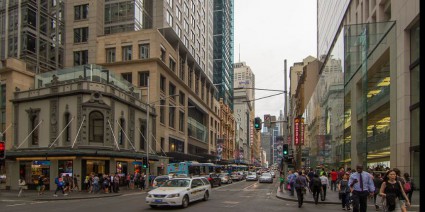
Growth in clothing, footwear and personal accessories retailing, strong tourism arrivals and continued international brand entrants are supporting retail trade and rent growth across most CBD’s, according to CBRE’s Q2 Retail Marketview report.
CBRE Senior Research Manager Australia, Danny Lee, said overall prime and secondary retail rent grew faster than super prime rents in H1 2016, with three percent and five percent growth respectively.
“Despite lower super prime rent growth during Q2, this sector is forecast to see increases over the second half of 2016 and 2017.”
Leif Olson, CBRE Head of Retail Brokerage Leasing Australia, said the strong growth in prime and secondary retail rent are being supported by the heated competition for CBD spaces and low vacancy rates, which are prompting retailers to look at alternative locations.
“The strong CBD demand, particularly being driven by foreign brands, has pushed other retailers into the prime and secondary locations, which in turn has created stronger demand for these sectors and supported rent growth.”
“This trend is particularly prevalent in Sydney, where low vacancy rates are prompting retailers to establish themselves in new parts of the CBD. This is being witnessed in the prime southern end of the city, with more retailers looking towards the World Square precinct for expansion opportunities – recent new market entrants include Tim Ho Wan and Uncle Tetsu’s Japanese Cheesecake shop” said Mr Olson.
The influx of international retailers is expected to continue in 2016, which will place increased pressure on local retailers, department stores and discount department stores, Mr Olson said, adding that these groups will look to reposition and work on their brand strategy and offerings to combat the increased international retail presence.
“Landlords are looking to capitalise on retail demand and increase retail rent by reconfiguring ground floor space of their buildings to increase retail footprint. This not only assists in leasing office space above, but also in securing higher rental income and market value for the building.”
“Continued urban redevelopment throughout the CBD and fringes will activate new retail precincts,” said Mr Olson.
According to CBRE Research, CBD vacancy rates are expected to remain low over the medium term, underpinned by heated competition for space driven by foreign retailers.
“Retail supply in Sydney is structurally constrained, given the strong preference for ground floor retail which limits stock growth to an extent. Despite this however, we are seeing new development projects emerging on George Street in Circular Quay and midtown, which will bring new opportunities to the market,” said Mr Olson.
“One factor that is supporting retail trade growth is increasing tourism, particularly with Chinese tourists exceeding a million visitors in the year to March 2016. These visitors are positively benefiting Australian retailers, particularly in the luxury and mid-end markets, as they are on average the highest spenders per trip by a far margin.”





















